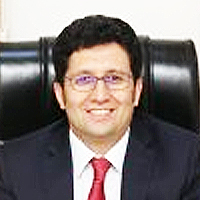Myxedema coma in COVID-19
Published on: 31st July, 2021
OCLC Number/Unique Identifier: 9146322981
SARS-CoV-2 infection is associated with thyroid disorders. It has been reported that myxedema coma (MC) can be complicated with COVID-19. COVID-19-related thyroid disorders consist of a broad spectrum of thyroid dysfunction, from thyrotoxicosis to decompensated hypothyroidism. It is possible that both primary and central thyroid disorders are induced by COVID-19 due to systemic inflammatory and immune responses. We experienced two cases in which patients with COVID-19 developed MC with central hypothyroidism. It is likely that MC affected the severity of COVID-19. It is necessary to consider the existence of MC during SARS-CoV-2 infection. We propose the potential mechanisms.
Myxedema Coma and Acute Respiratory Failure in a Young Child: A Case Report
Published on: 26th July, 2023
Background: Myxedema is an extreme manifestation seen in patients with untreated hypothyroidism. It is a lethal endocrine emergency, which arises when a precipitating cause overwhelms the compensatory mechanisms of the hypothyroid state.Objectives: This case report aims to present a case of myxedema coma secondary to cretinism. It also aims to discuss how hypothyroidism leads to hypoventilation and eventually respiratory failure, as well as to discuss the epidemiology, pathophysiology, clinical manifestation, diagnosis, and management of a child with myxedema coma.Case presentation: This is a case of a 7-year-old female, diagnosed with congenital hypothyroidism at 5 months of age, but eventually was lost to follow-up. She came back after 7 years presenting with difficulty of breathing. She was seen hypothermic, obtunded, and in severe respiratory distress. She was severely stunted and underweight with coarse facial features. Initial laboratory work-up showed elevated Thyroid Stimulating Hormone (TSH) as well as decreased tri-iodothyronine (FT3) and thyroxine (FT4). She was immediately started on levothyroxine, with noted resolution of the edema and improvement in sensorium. There was also noted improvement in the patient’s ventilation and was sent home on Continuous Positive Airway Pressure (CPAP) while asleep.Conclusion: This case highlights the importance of having a high index of suspicion of its clinical manifestations, which could lead to earlier intervention thereby preventing further complications. A multidimensional approach is essential in managing this case, as various organ systems are involved in this condition.




